|
Engineering Monthly November 2022
College of Engineering | Engineering Monthly, November 2022 |
|
|
From the Dean
Scott A. Ashford, Ph.D., P.E. (California)
We’re still buzzing with excitement over the announcement of the Jen-Hsun and Lori Huang Collaborative Innovation Complex, a $200 million, 150,000 square-foot research and education center that will harness team-based research in artificial intelligence, materials science, and robotics to solve global challenges in areas such as climate science, oceanography, sustainability, and water resources. And we’re extremely honored by Jen-Hsun and Lori’s generous $50 million gift to the OSU Foundation toward building the complex.
I can’t wait to see what collaborations arise among the world-class faculty that will leverage the complex’s state-of-the-art facilities, including a next-generation NVIDIA supercomputer estimated to be one of the fastest at a U.S. university, an extended reality theater, a clean room, a drone and robotics playground, and state-of-the-art water labs.
Of course, our researchers will also continue focusing on finding solutions for challenging problems out in the field, throughout the state of Oregon and beyond. Just this month, for example, we’re highlighting research on sneaker waves, wildfire recovery efforts, the hydrologic characteristics of watersheds of Alaskan rivers, and climate-adaptive sustainable groundwater management in the U.S. and around the world. Read on to learn more about these projects, as well as other exciting news about our faculty, students, and alumni.
Go Beavs!
|
|
|
|
|
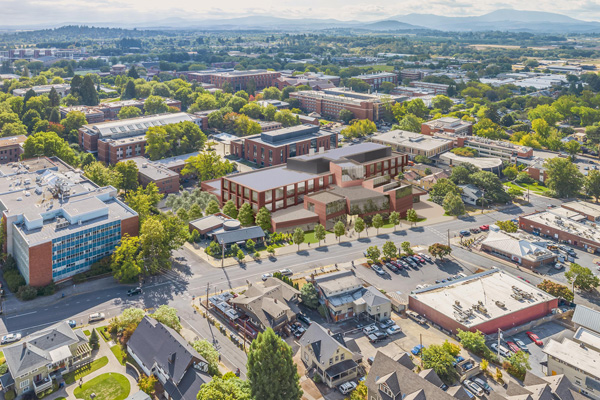 |
$200 million research complex coming to Oregon State
|
Last month, Oregon State University and the OSU Foundation announced the receipt of $100 million in gifts to launch the Jen-Hsun and Lori Huang Collaborative Innovation Complex, a $200 million research center where world-class engineers will collaborate with and empower internationally top-ranked Oregon State programs such as forestry and oceanography to tackle grand challenges in numerous areas including climate science, sustainability, water resources, and microelectronics. The complex, anticipated to open in 2025, is named in honor of two of our most distinguished alumni, Jen-Hsun and Lori Huang, who made the initial gift of $50 million toward its construction. Learn more … |
|
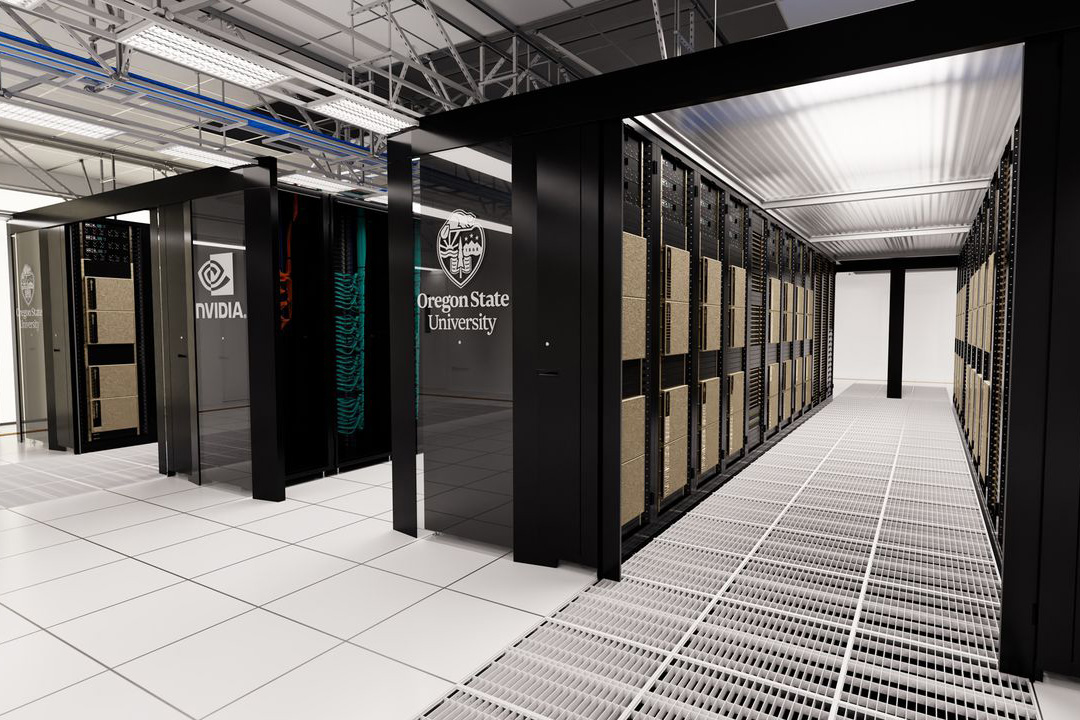 |
AI supercomputer to power Collaborative Innovation Complex
|
Harnessing the College of Engineering’s expertise in artificial intelligence, materials science, and robotics, the three-story, 150,000 square-foot Collaborative Innovation Complex will house specialized research facilities designed for team-based, transdisciplinary research — including a next-gen NVIDIA supercomputer estimated to be one of the fastest at a U.S. university. The supercomputer will be comprised of about 60 DGX and OVX systems — powered by next-generation CPUs, GPUs, and networking — creating a system powerful enough to train the largest AI models and essentially expand the building’s physical labs with simulations and digital twins so every student can access a virtual workbench. Learn more … |
|
|
|
|
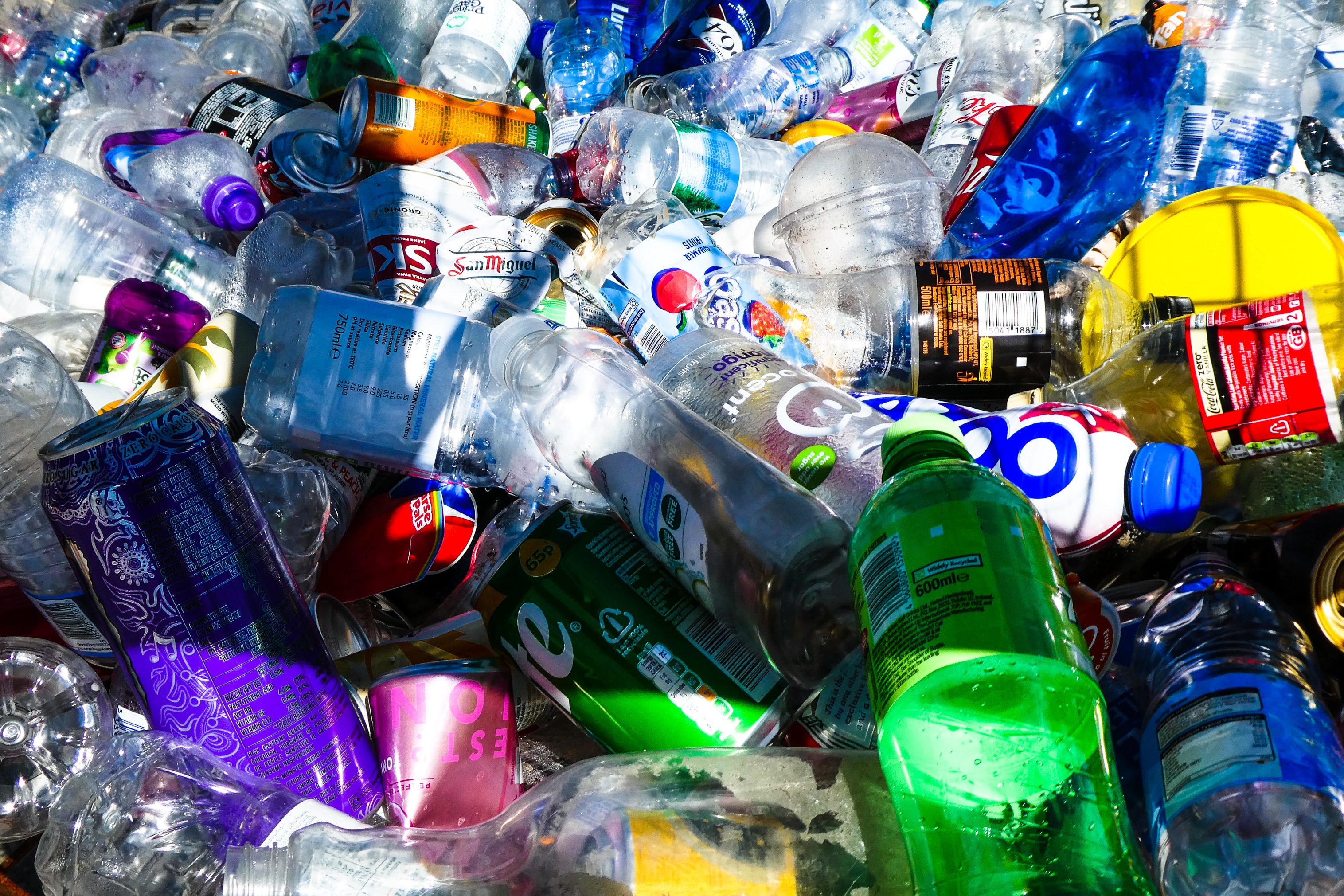 |
Plastic recycling expanded
|
Before coming to Oregon State last year, Lucas Ellis, assistant professor of chemical engineering, was part of a large research team at the National Renewable Energy Laboratory that used chemistry and bacteria to break down difficult-to-recycle mixtures of plastics into useful chemical ingredients. Learn more … (See also NREL, Anthropocene Magazine, KGW) |
|
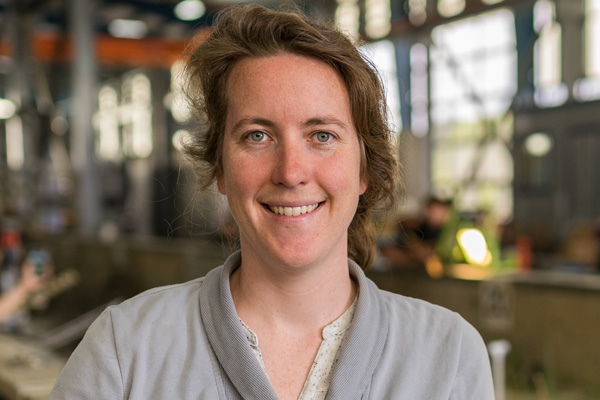 |
Monitoring undersea cables for signs of sneaker waves
|
Meagan Wengrove, assistant professor of coastal and ocean engineering, is measuring the strain on an undersea fiber optic telecommunications cable to monitor the interaction between waves and currents. A better understanding could lead to useful sneaker wave warnings for coastal communities. Learn more … |
|
|
|
|
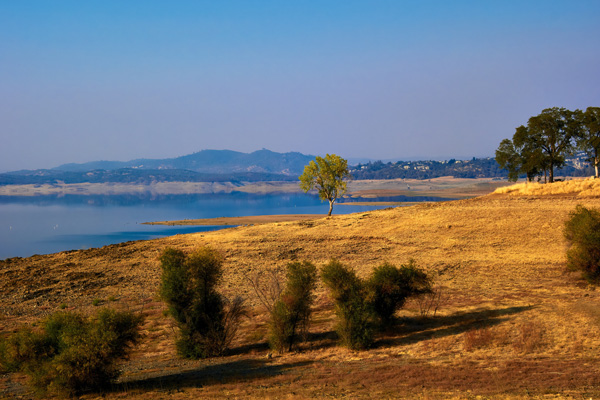 |
What does it mean to count as a waterway? |
Adam Ward, department head and professor of biological and ecological engineering, recently commented on the potential impact of a new study showing that droughts in the South and West are becoming more intense. “The implications of changing streamflow are going to cascade through some of our regulations in a way that we don’t necessarily appreciate,” Ward said. Learn more …
|
|
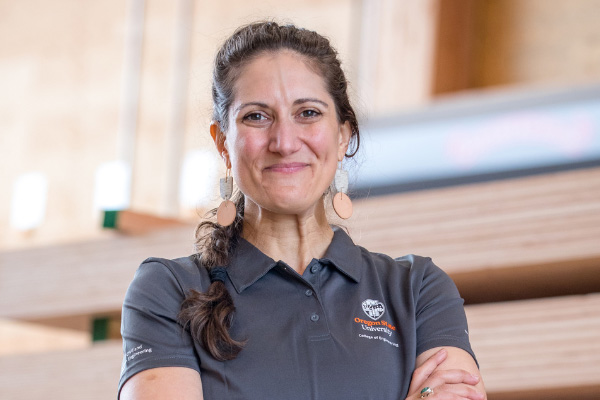 |
Wildfire recovery
|
Erica Fischer, assistant professor of structural engineering and the John and Jean Loosley Faculty Fellow, is leading an Alfred P. Sloan Foundation-supported team building new technologies to improve wildfire recovery efforts. The team is developing sensors that can reveal whether a pipe has been exposed to extreme temperatures, and thus whether water flowing through it is safe to drink. Learn more … (Listen to the related Engineering Out Loud podcast episode) |
|
|
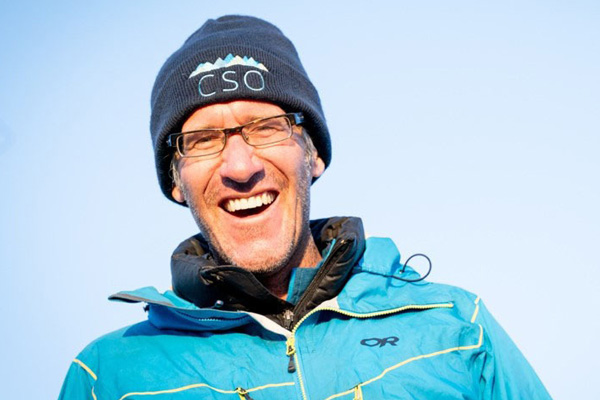 |
What’s changing, and how do we know?
|
For the past few years, David Hill, professor of coastal and ocean engineering, has served as a member of the Protect Our Winters Science Alliance team, whose goal is educating policymakers and the public about climate science. He recently penned an article for the organization about the hydrologic characteristics of watersheds for a small handful of rivers in Alaska. Learn more …
|
|
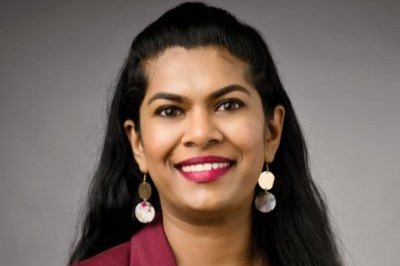 |
Soil Physics and Hydrology Early Career Award
|
The Soil Science Society of America’s Soil Physics and Hydrology Division recently awarded the Soil Physics and Hydrology Early Career Award to Salini Sasidharan, assistant professor of biological and ecological engineering. She plans to use the award to conduct water quantity and quality research toward the development of climate-adaptive sustainable groundwater management in the U.S. and worldwide. Learn more ... |
|
|
|
|
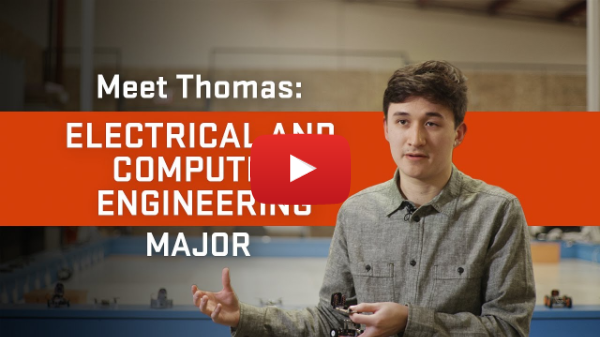 |
Watch now: Meet electrical and computer engineering student Thomas Snyder
|
As an undergraduate in electrical and computer engineering, Thomas Snyder has had opportunities to work on real-world problems — through research, internships, and student clubs. He’s pursuing his interest in robotics in the Human-Machine Teaming Laboratory, where he worked on software and hardware for robots that use biologically inspired models. Watch the video ... |
|
|
 |
Making an Oregon State education more accessible
|
Marcus Mateus is pursuing his computer science degree online with Oregon State thanks to a zero-tuition benefit through his employer, Target, and Guild Education. Learn more … |
|
|
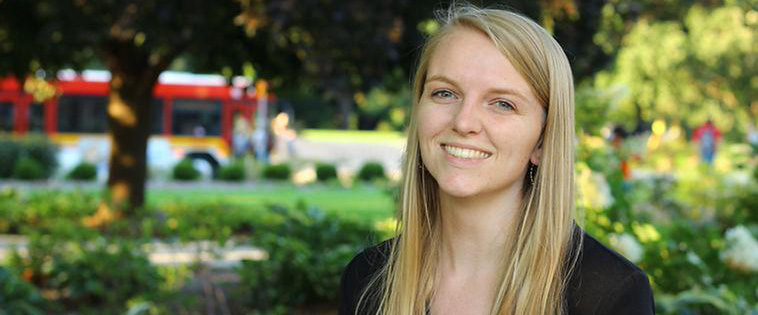 |
Beringer named Oregon Sea Grant Malouf Scholar
|
Congratulations to Courtney Beringer, named one of Oregon Sea Grant’s two Robert E. Malouf scholars for 2022. Over the past two years, Beringer designed, built, and tested an open-source wave energy converter for use in the O.H. Hinsdale Wave Research Laboratory at Oregon State. Her research aims to improve both power production efficiency and public understanding of WEC tech. Learn more ... |
|
|
|
|
 |
High-end knives cut through competition
|
Earlier this year, the New York Times profiled a 6-inch carbon steel chef knife and a 10-inch carbon steel bread knife made by Portland-based Steelport Knife Co. Recently, the company, co-founded by triple electrical engineering alum, Ron Khormaei, began selling several models of its high-end cutlery in Japan and Canada. Learn more … |
|
|
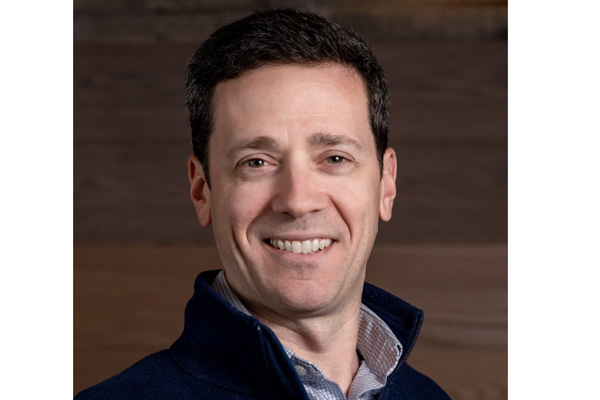 |
Aviation in his blood
|
Before co-founding Reliable Robotics, maker of autonomous aircraft systems, Robert Rose, B.S. computer science ’02, M.S. electrical and computer engineering ’06, racked up an impressive resume, with increasingly higher profile software engineering gigs at HP, Sony, SpaceX, Tesla, and Google. In this Q&A, he talks about becoming an entrepreneur, building a corporate culture, and the future of autonomous aviation. Learn more ... |
|
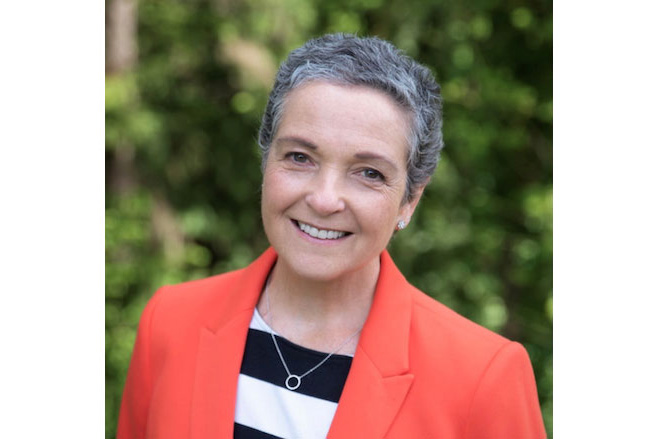 |
Making history
|
The American Road & Transportation Builders Association has named Paula Hammond, B.S. civil engineering ’78, the association’s chair for 2022-2023. Hammond, former head of the Washington State Department of Transportation and now a senior official with WSP USA, is the first woman to serve as chair in the 120-year history of the association. Learn more … |
|
|
|
|
|
|
|
|
|
|
|
|
|